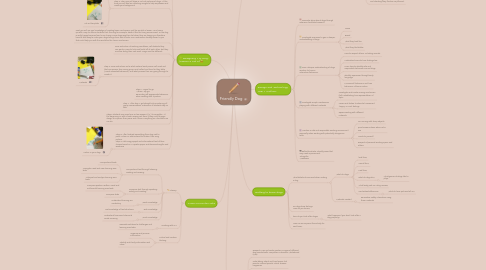
1. Materials
1.1. Research: Pop-up books, posters, images of different dog breeds,iPads, computers, Interactive Whiteboard (IWB)
1.2. Note-taking: Blank and lined paper, led pencils, colored pencils, rulers, erasers, magazines
1.3. Making: Scissors, glue, dog cut out sheet, lever and slider cut out sheet, checklist, coloured pencils/ Textas, eraser, blank piece of paper. card, hole punch, sticky tape
1.4. Products that work by a lever or slider mechanism: scissors, balance, cork screwer, blinds, window, doors
1.5. Method of Evaluation: Evaluation questionnaire, paint and paintbrush, information of breed of their own choice including safety message, poster paper, glue, crepe paper, pencils, pom pom, glitter, pipe cleaners, scissors.
2. Cross Curricular Links
2.1. Literacy
2.1.1. Comprehend text through listening, reading and viewing:
2.1.1.1. -Comprehend texts
2.1.1.2. -Navigate, read and view learning area texts
2.1.1.3. -Interpret and analyse learning area texts
2.1.2. Compose text through speaking, writing and creating
2.1.2.1. Compose spoken, written, visual and multimodal learning area texts
2.1.2.2. Compose texts
2.1.3. Word Knowledge
2.1.3.1. Understand learning are vocabulary
2.1.4. Text Knowledge
2.1.4.1. Use knowledge of text structures
2.1.5. Visual Knowledge
2.1.5.1. Understand how visual elements create meaning
2.2. Creating with ICT
2.2.1. Generate solutions to challenges and learning area tasks
2.3. Critical and creative thinking
2.3.1. Organise and process information
2.3.2. Identify and clarify information and ideas
3. Designing 'My Dog' (Lesson 5 out of 8)
3.1. Step 1: Prompt students prior knowledge. Guide students to prompt knowledge - Ask what they have learnt so far (refer to their investigation points)
3.1.1. Motivate and engage students. Make sure you remind them that they are now capable of crating/designing their own picture
3.2. Step 2: Then you will draw or cut out pictures of dogs. At this time you will also be collecting images to help emphasise and create your background
3.2.1. Explain that once they have made their decision of what they want their dog to loo like they can start Individual work, therefore no two copies should be alike
3.2.2. cut out template
3.3. Next you will use you knowledge of creating basic mechanisms just like we did in lesson 4 and come up with a way to inform students that, the dog for example, doesn’t like the living environment, or the dog is really happy because food is on its way. Since dogs wag their tail when they are happy, you therefore have to find away to make your dogs tails go from side to side. One mechanism already shown to you that could help you with this would be the ‘lever’ mechanism.
3.4. Give instruction of working conditions; Tell students they can work in pairs to help and build off of each other, but they must be doing their own work. Dogs must be different.
3.5. Step 5: Give instructions as to what material each person will need and that one person from every group must collect and item for they table (Avoid unwanted behaviour). and what process their are going through to create it.
3.5.1. Materials
3.6. Step 6 : Signal to go "When I say go" Reminding off appropriate behaviour when working with a partner.
3.7. Step 7: After step 7 get straight into monitoring all group conversations- make sure all students stay on task.
3.8. Step8 :Students may need one or two session (1hr ) to complete. At the beginning or end of each session ask them if they could change design or improve their piece and if there is anything as a facilitator we can do.
3.9. Step 8: After finished assembling their dog, ask to paint, colour or add material to finalise their Dog picture. Step 9: Stick Dog puppet and informational text of their chosen breed on A3 poster paper and discuss strengths and weakness
3.9.1. Colour in your dog!
4. Design and Technology Year 1 Outline:
4.1. Generate ideas about dogs through extensive facilitated research.
4.2. Investigate scenarios to gain a deeper understanding of dogs
4.2.1. Name
4.2.2. Breed
4.2.3. What they look like
4.2.4. What they like/dislike
4.3. Gain a deeper understanding of dogs reaction to human interaction/behaviour
4.3.1. How to respect others, including animals.
4.3.2. Understand animals have feelings too.
4.3.3. Learn how to identify safe and responsible behaviour around dogs
4.3.4. Identify expression through body language
4.3.5. Movement/ behaviour and how behaviour influence action
4.4. Investigate simple mechanisms playing with different materials
4.4.1. Investigate and create moving mechanism (tail), establishing true representation of topic.
4.4.2. Levers and sliders to show tail movement 'happy' or 'sad' feelings
4.4.3. Experimenting with different materials
4.5. Maintain a safe and responsible working environment especially when working with potentially dangerous tools
4.5.1. No running with sharp objects
4.5.2. point scissors down when not in use
4.5.3. Hands to yourself
4.5.4. Respect of personal working space and others
4.6. Reflect/Evaluate: Identify areas that may need improvement -Stregnths -Weakness
5. Getting to know dogs
5.1. What details do we need when making a dog
5.1.1. What do dogs:
5.1.1.1. look like?
5.1.1.2. Sound like?
5.1.1.3. Feel like?
5.1.1.4. what do dogs do?
5.1.1.4.1. What games do dogs like to play?
5.1.1.5. What body part on a dog moves?
5.1.1.6. Similarities/Differences
5.1.1.6.1. What do hese pictures tell us?
5.1.2. Materials needed
5.1.2.1. Remember safety rules when using these materials
5.2. Do dogs have feelings How do you know?
5.3. how do you look after dogs?
5.3.1. What happens if you don't look after a dog properly?
5.4. How can we improve this activity for next time?
6. Australian Curriculum (ACARA) Technology- Design and Technology (Foundation to Year 2)
6.1. Design and Technologies: Processes and Production Skills
6.1.1. Use materials, components, tools, equipment and techniques to safely make designed solutions (ACTDEP007).
6.1.2. Using and playing with everyday materials in new ways or re-using discarded materials, for example using discarded materials to design.
6.1.3. Learning and safely practising a range of technical skills using tools and equipment, for example joining techniques when making products.
6.1.4. Assembling components of systems and checking they function as planned.
